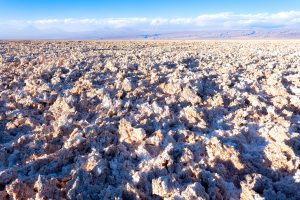While the Australian prime minister is visiting China for the first time in seven years, ABC News emphasized the necessity of Chinese investment if Australia is to meet its lofty energy transition targets. The article urged the Australian Foreign Investment Review Board to cease hindering Chinese contributions to the critical minerals sector. This positive signal comes just one year after observers were hopeful about the meeting between Australian Prime Minister Anthony Albanese and Chinese President Xi Jinping in November 2022.
If Australia reopens its resources sector to Chinese investors, it would mark a significant step away from the existing trend. As The Diplomat previously observed, Australia “has invoked national and economic security imperatives to block legal, and largely market-driven Chinese investments” in critical minerals such as lithium.
The implications of this signal, however, extend beyond the two countries. Australia’s position as a pivotal ally of the United States and a major global supplier of critical minerals places it in a strategic position to influence positive outcomes for global climate initiatives. It is our hope that Albanese’s visit marks the beginning of a rational and cooperative phase in the global supply chains of critical minerals, demonstrating a shared commitment to tackling the pervasive challenges posed by climate change.
The urgent need to transition toward renewable energy systems to combat climate change has highlighted the crucial role of critical minerals. The energy transition urgently required to limit global warming relies heavily on the development of the critical mineral sector, as low-carbon technologies are mineral intensive. Since significant momentum has emerged to reroute global supply chains for these minerals, we need to be cautious to not let the securitization of critical energy transition minerals (CETMs) harm the energy transition and undermine the global climate change efforts.
The production and processing of CETMs are more concentrated than those of fossil fuels, with China playing a central role in the supply chain of many critical minerals. In the case of graphite and rare earths, for instance, China assumes a dual role as the producer of 70 percent of the global supply and the dominant player along nearly the entire supply chain. Even in the case of lithium, where mining is concentrated in Australia, Chile, and Argentina, China exercises significant prowess in processing and battery production.
The uneven market structures, compounded by geopolitical tensions, nationalism, and protectionism, have fueled the momentum of securitizing supply chains of CETMs. The United States and the European Union have prioritized reducing dependence on China and Russia for critical mineral supply. The justification for reducing dependence on supplies from China is further strengthened by the widespread adoption of de-risking strategies.
While diversifying the supply chains is beneficial for more resilient CETMs, we need to prevent the securitization of CETMs in a way that divides the world in terms of critical mineral supply. Examples of such dividing securitization includes Canada’s forced divestment of Chinese investors, Australia’s blocking of Chinese investment in a rare earth firm early this year, and Australia’s preference for “like-minded” foreign investors.
These activities have triggered responses from China, as exemplified by its measures to control exports of gallium and germanium. These examples act as a wake-up call, underscoring the need to address this issue promptly. Failing to do so could result in a downward spiral in the division of global critical supply chains.
Interruptions in critical material supplies would be more harmful for the potential deceleration of energy transitions than for posing a threat energy security itself. Dividing the supply chains of critical minerals and low-carbon technologies in the name of enhancing security, ironically, would have grave implications for the energy transition and climate efforts. Restricting international trade and investment of CETMs undermines the potential for cost reductions and hampers emission reduction efforts worldwide as low-carbon technologies rely on international trade networks and investment to lower costs and drive innovation.
Moreover, dividing critical mineral supply chains and low-carbon technologies would result in economic losses for all countries involved. Recent estimates suggest that the globalized photovoltaic (PV) module market has saved PV installers $24 billion in the United States, $7 billion in Germany, and $36 billion in China. Conversely, the Trump administration’s 30 percent tariff on U.S. imports of crystalline-silicon PV products in 2018 was projected to cause a potential loss of 62,000 jobs and 10.5 gigawatts of generation capacity by 2021, equivalent to all solar PV deployed in the United States.
The international community must come together to safeguard and advance international trade, investment, and cooperation related to critical minerals. This approach is vital not only for individual national economic interests but also to effectively address the challenges posed by climate change. Without concerted efforts to prevent this division, countries risk disruptions in critical mineral supply chains, hindering the transition toward renewable energy systems and impeding global climate change mitigation.
By working together, we can prevent the looming critical mineral division, secure a sustainable supply of critical minerals, and successfully transition to a low-carbon future.

































